Avifauna Namibia: The Ultimate Birding Tour
Avifauna Namibia: The Ultimate Birding Tour with natural history specialities to the central and north-western birding hotspots of Namibia.
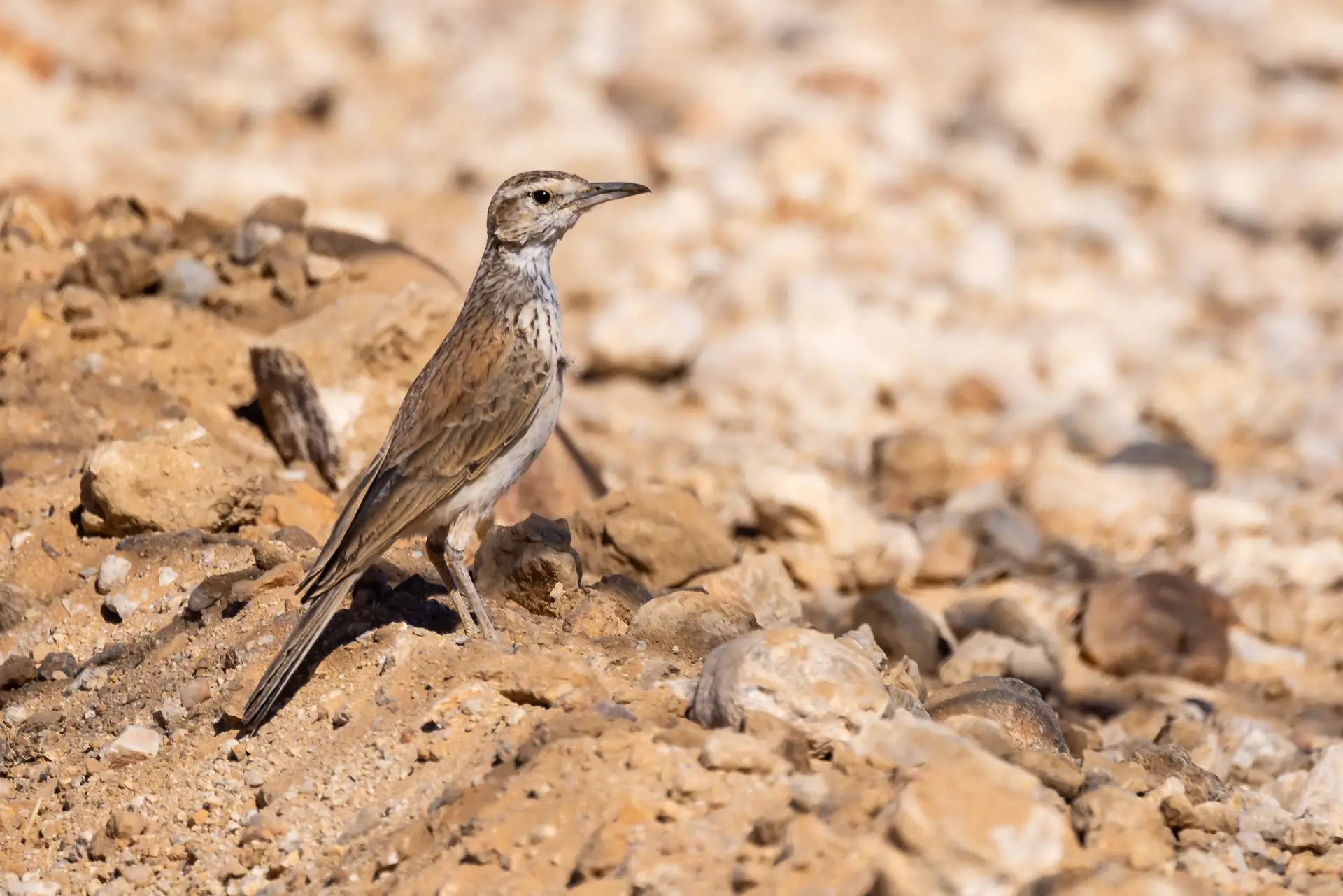
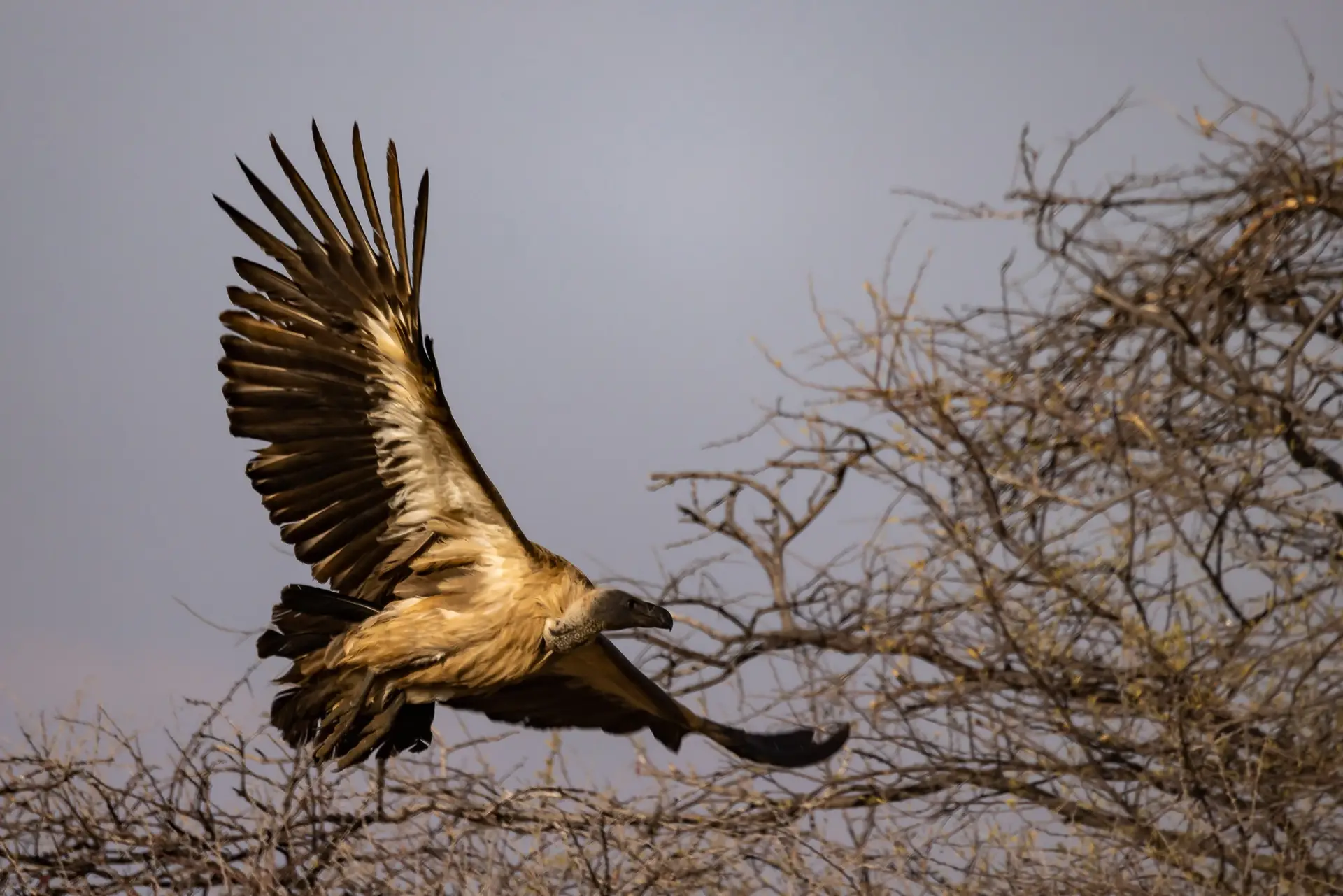
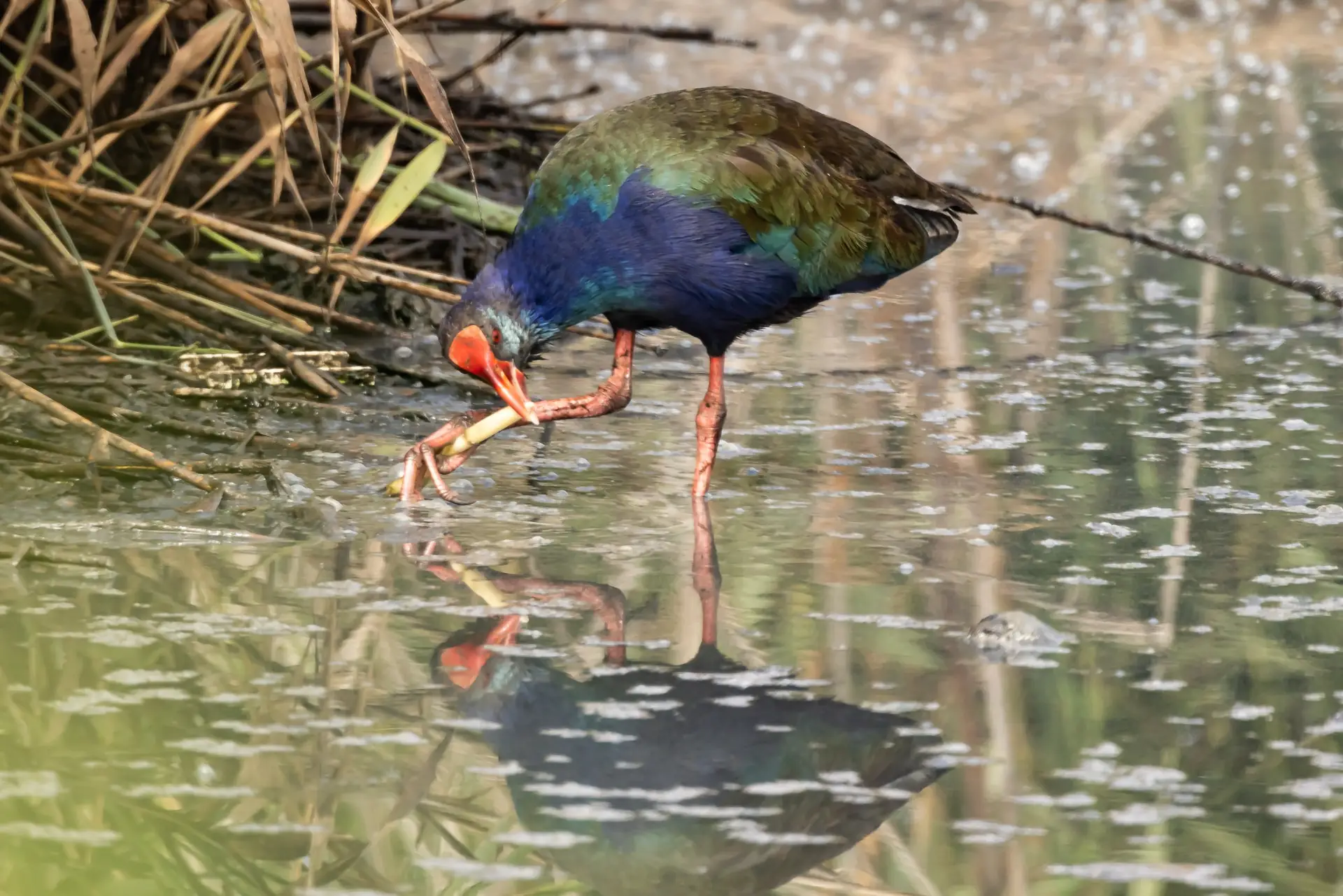

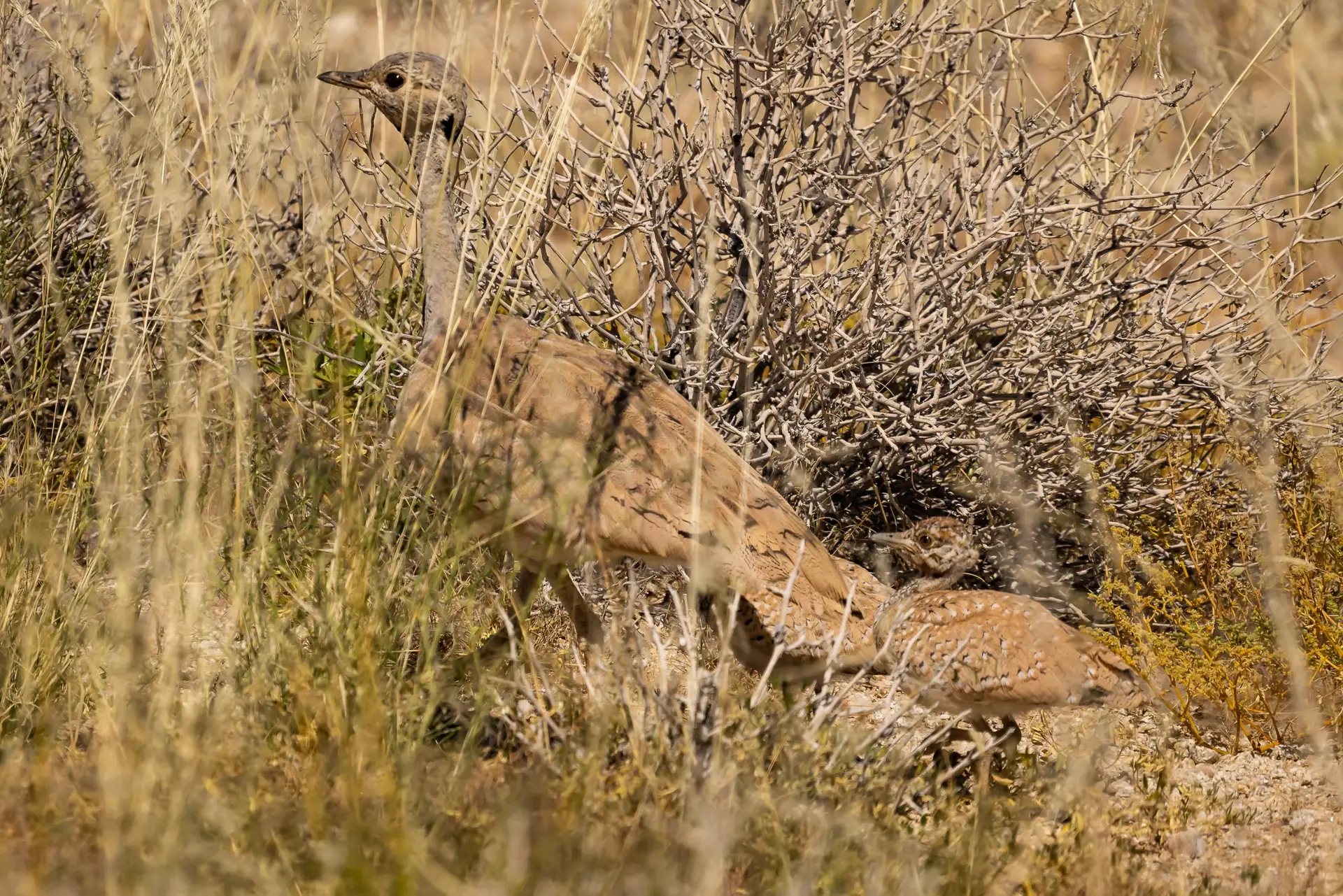
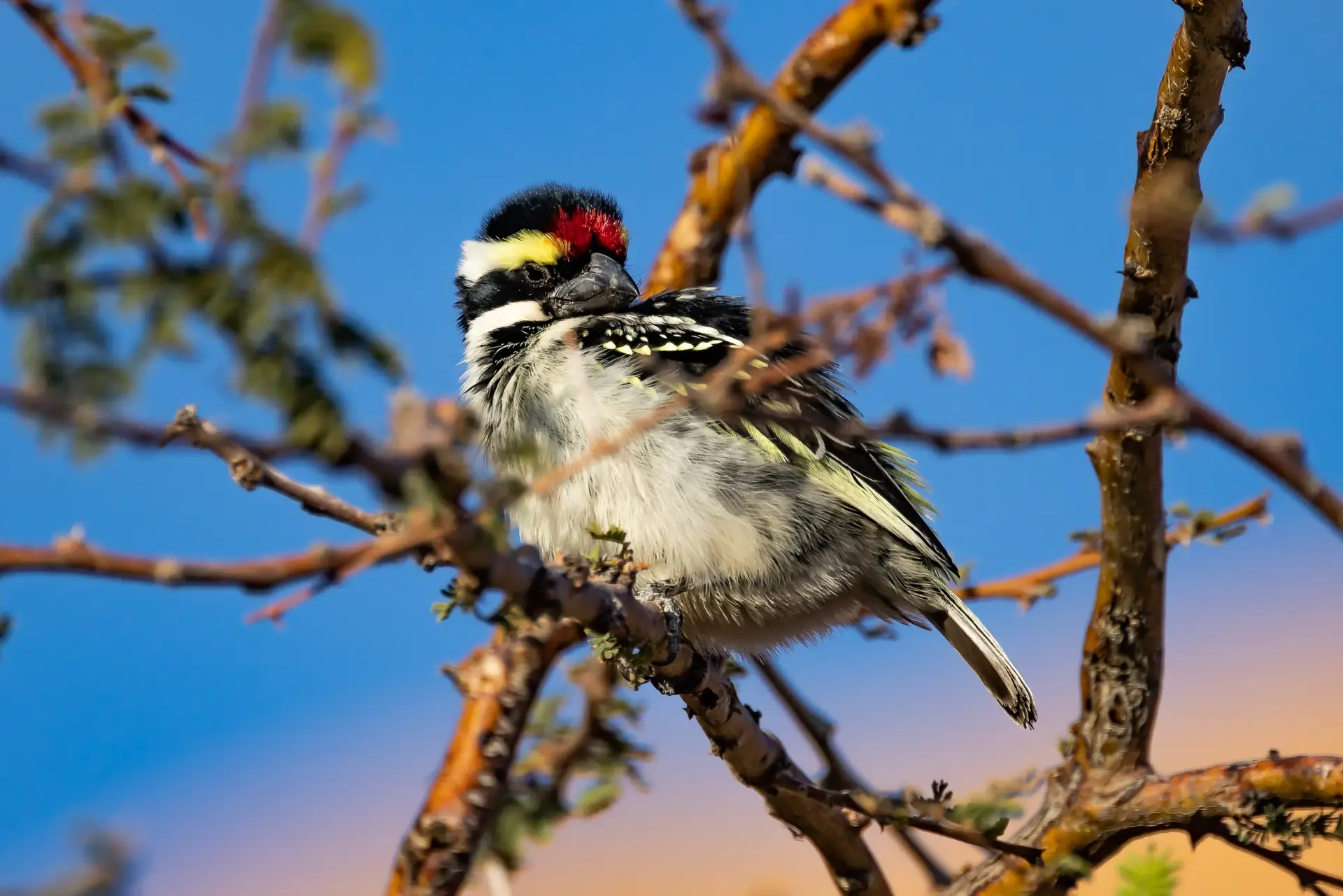
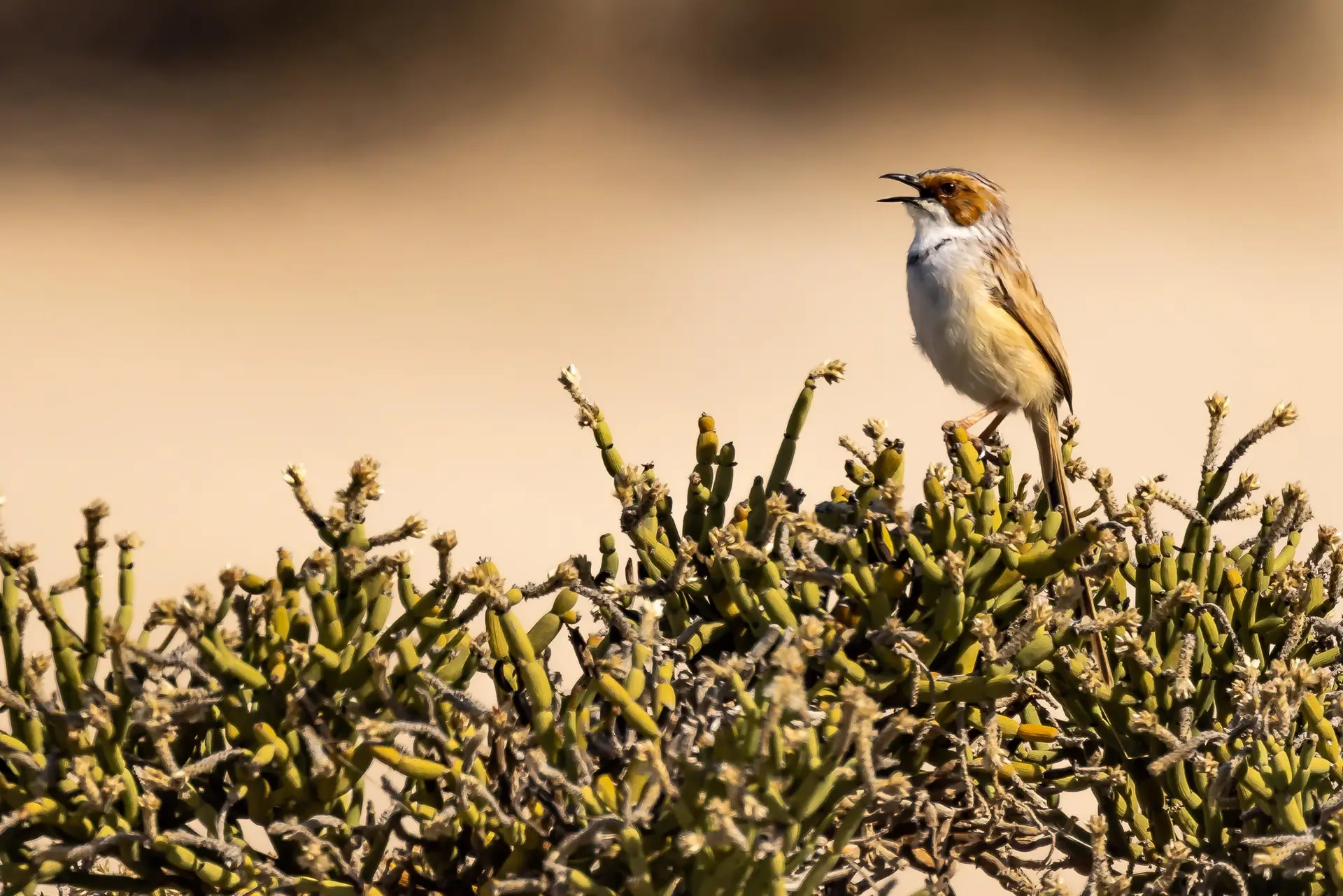
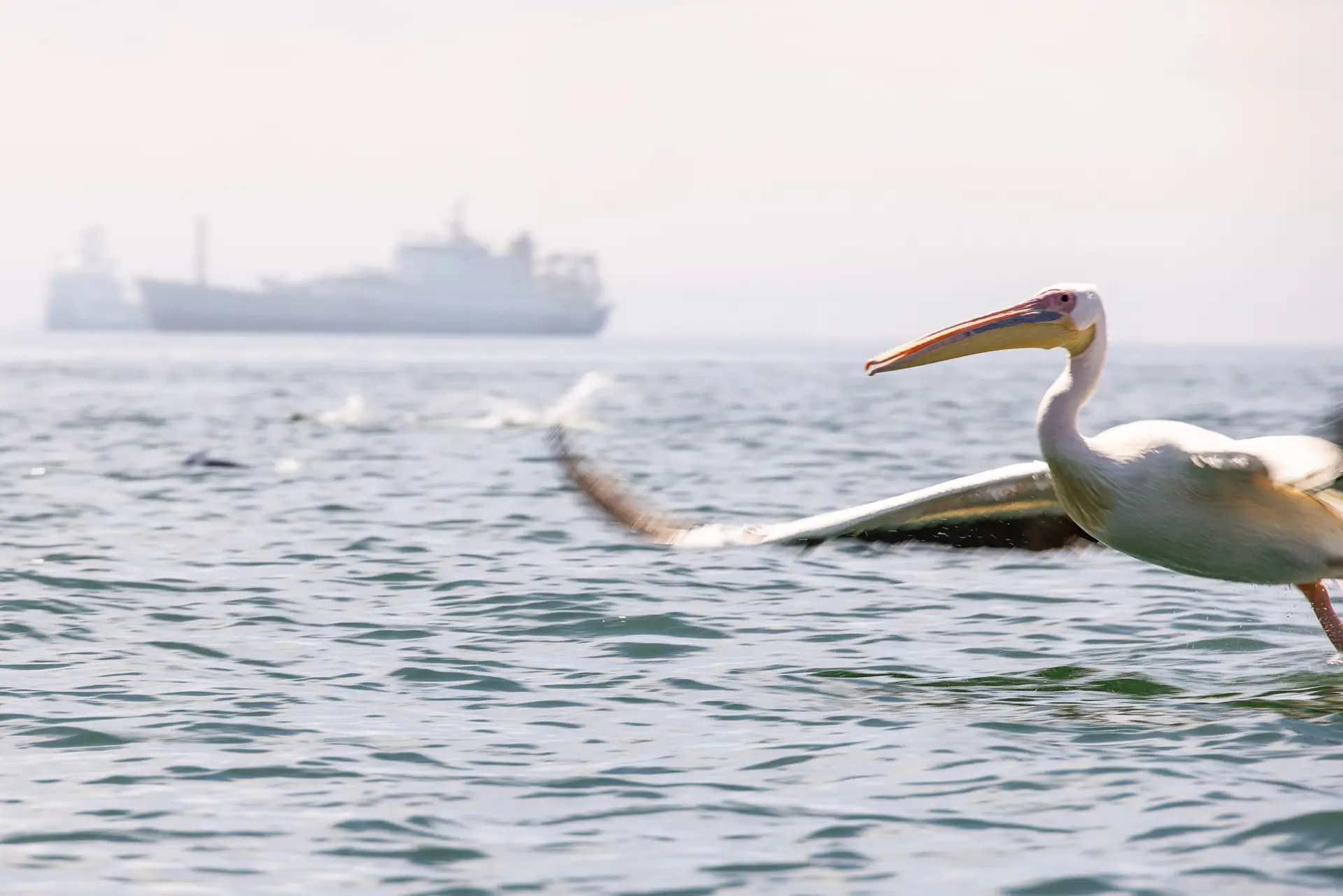

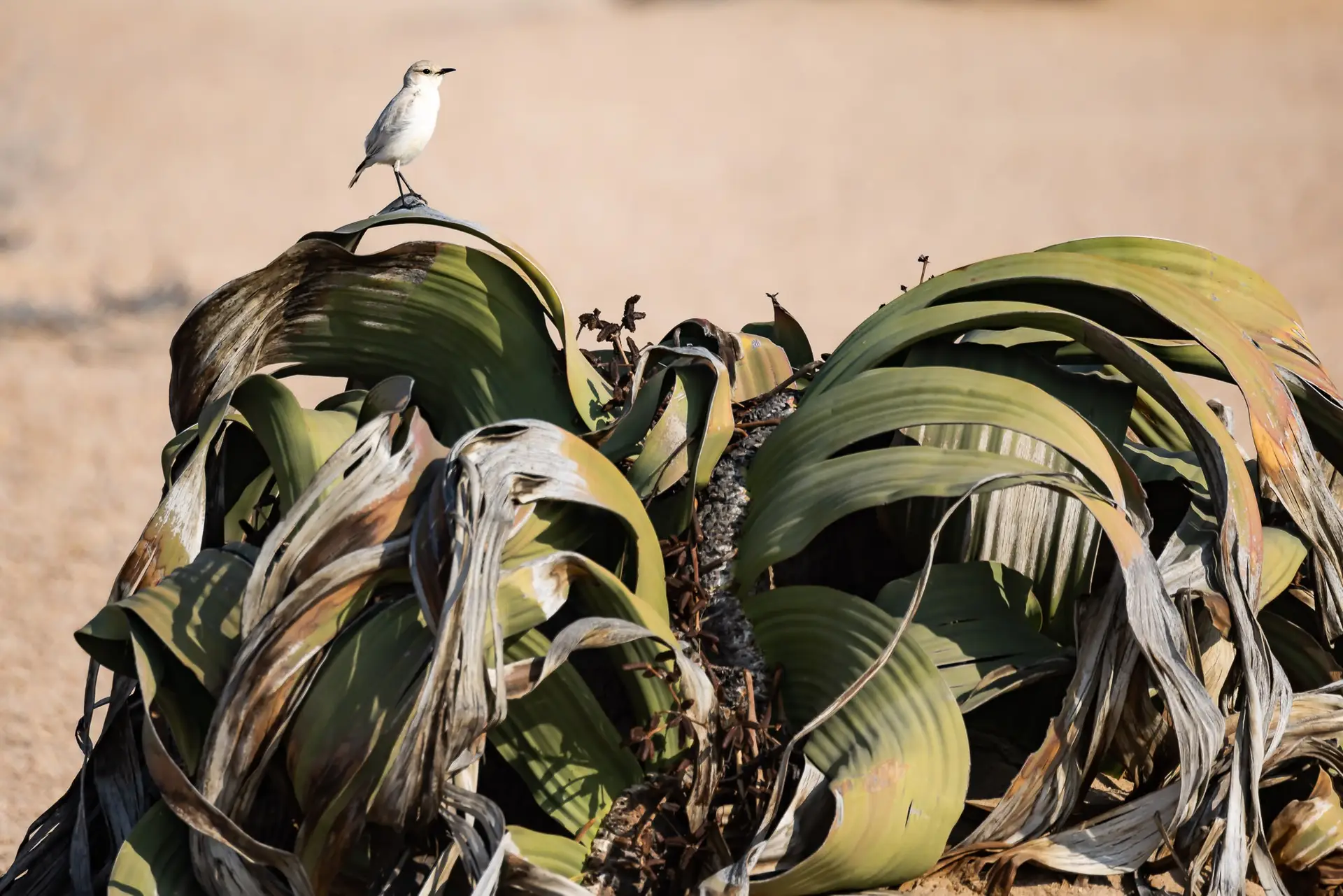
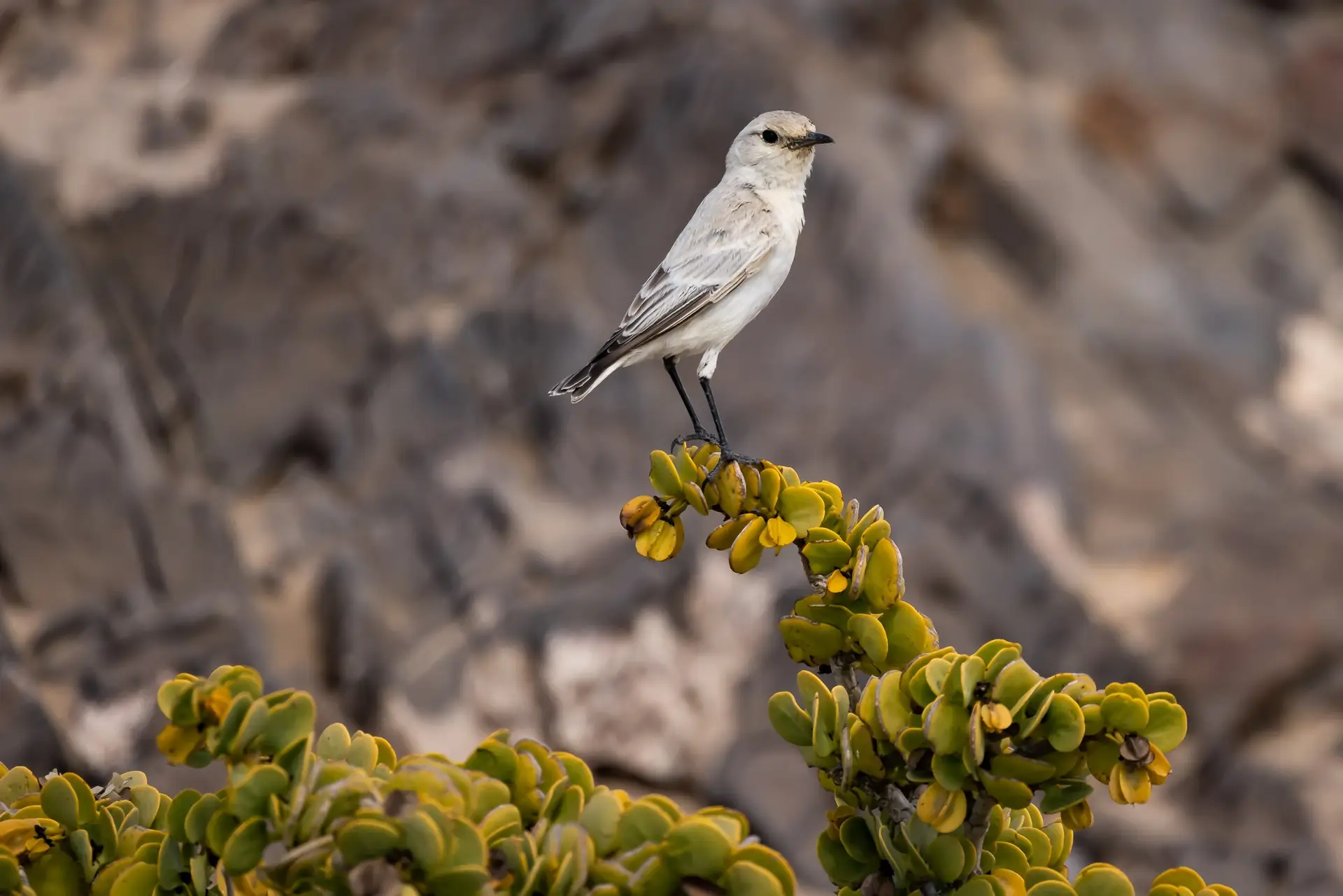

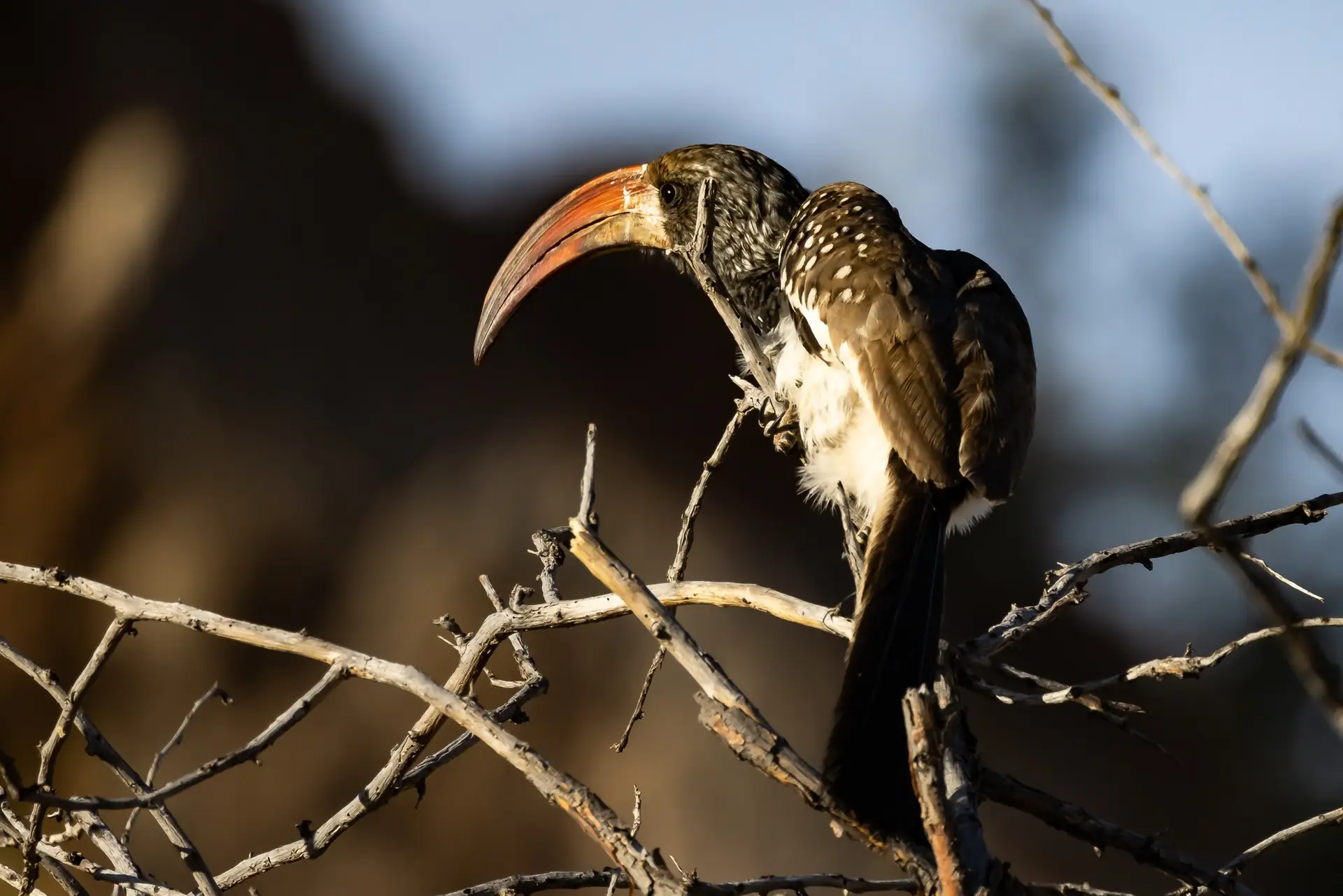

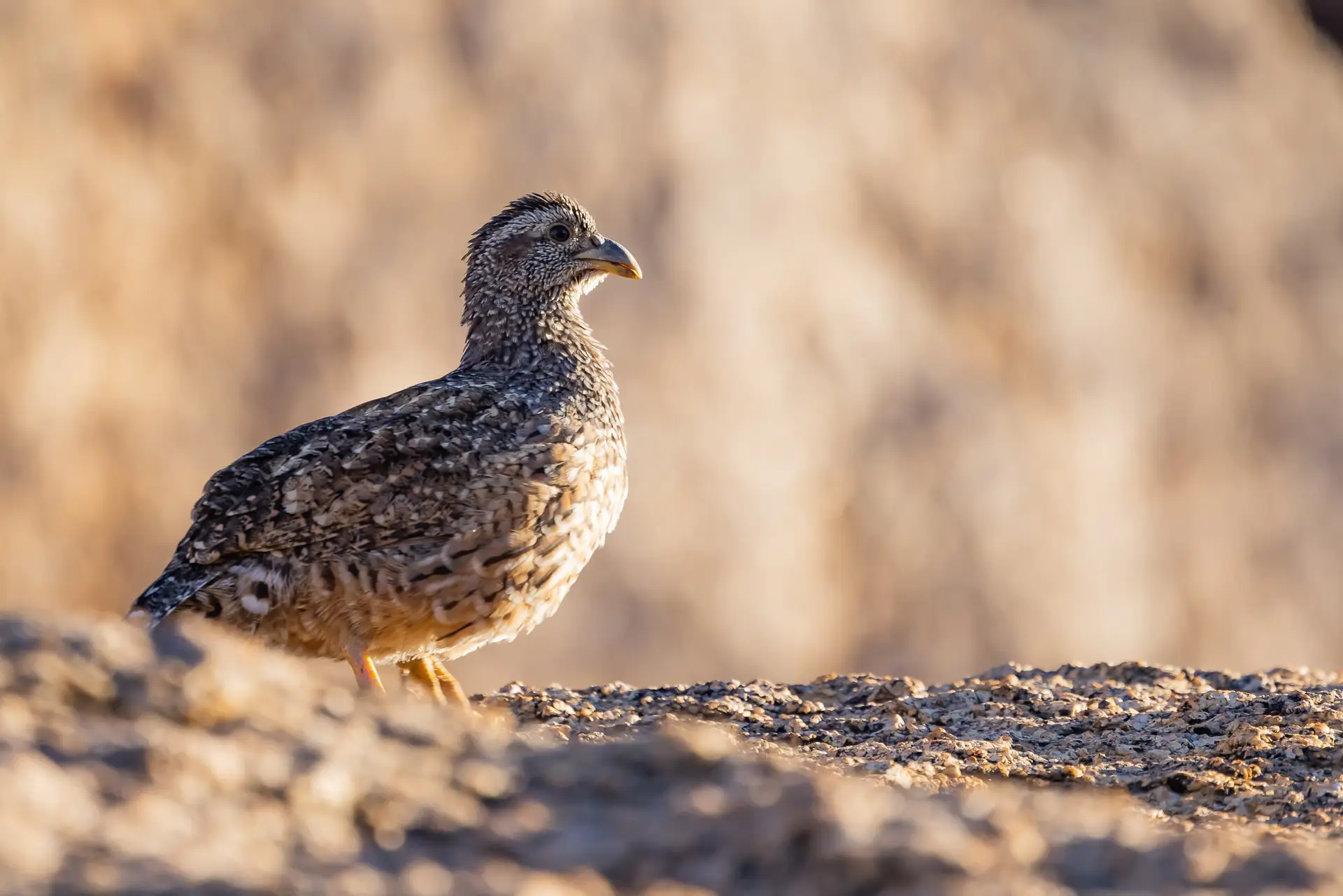
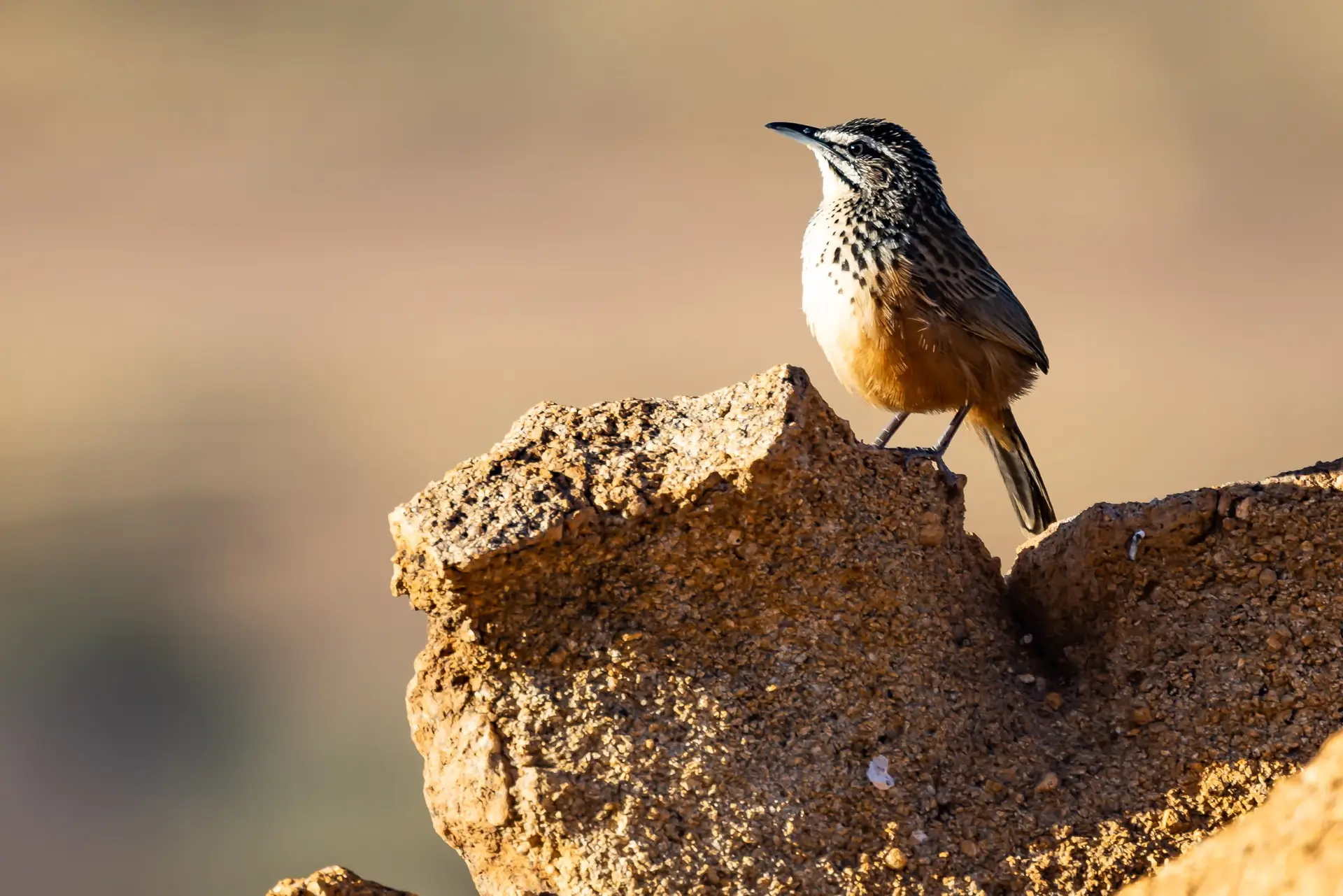
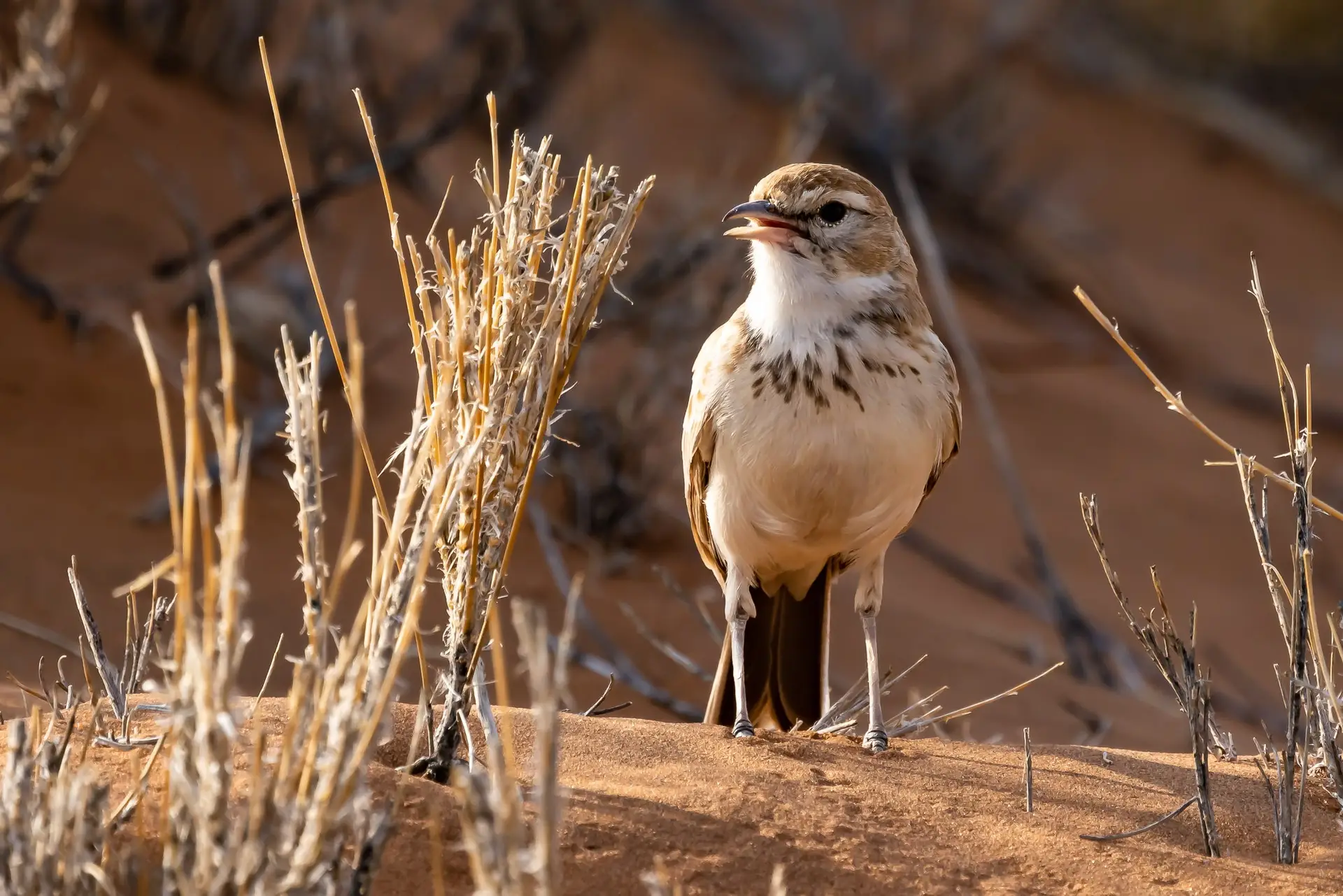
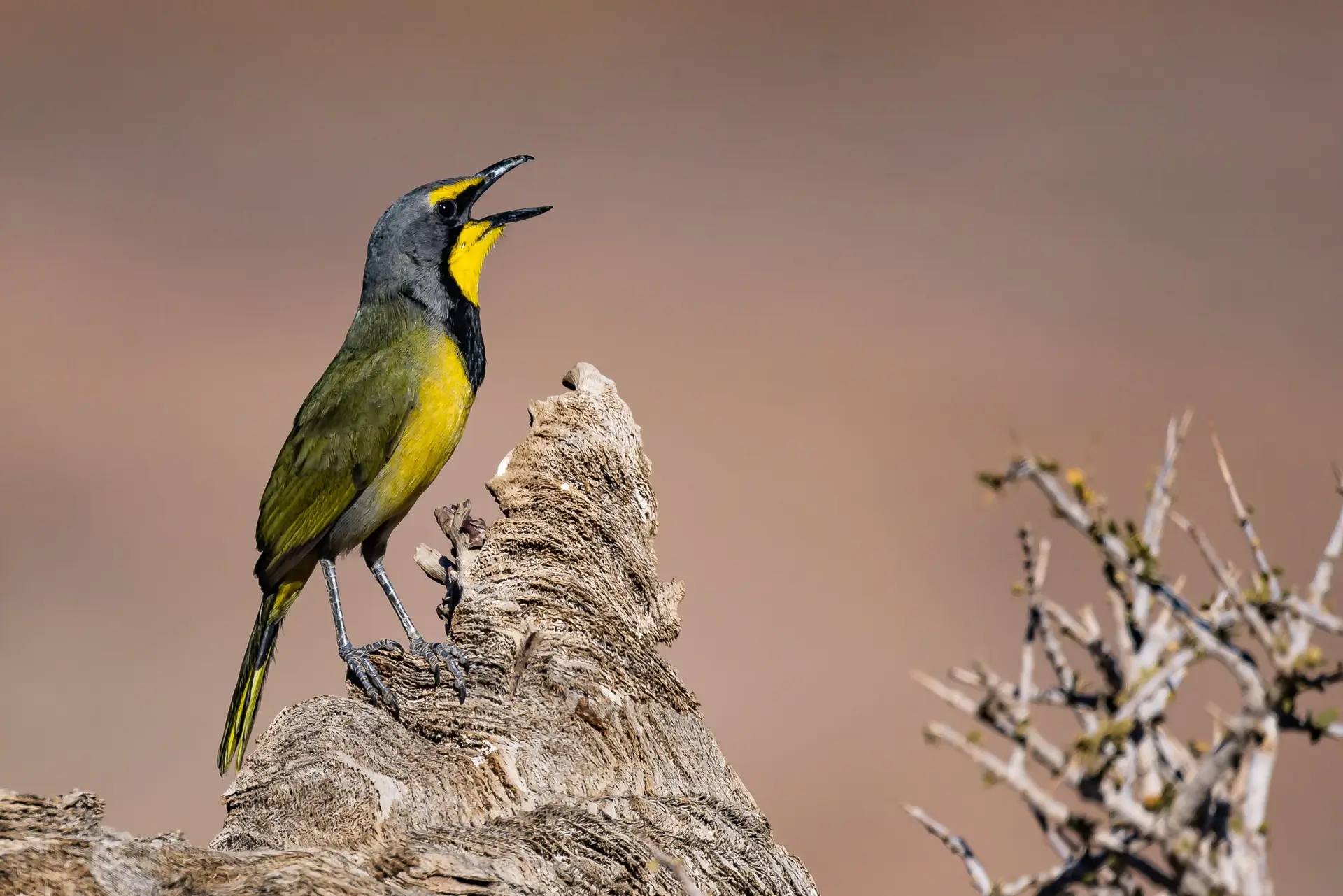
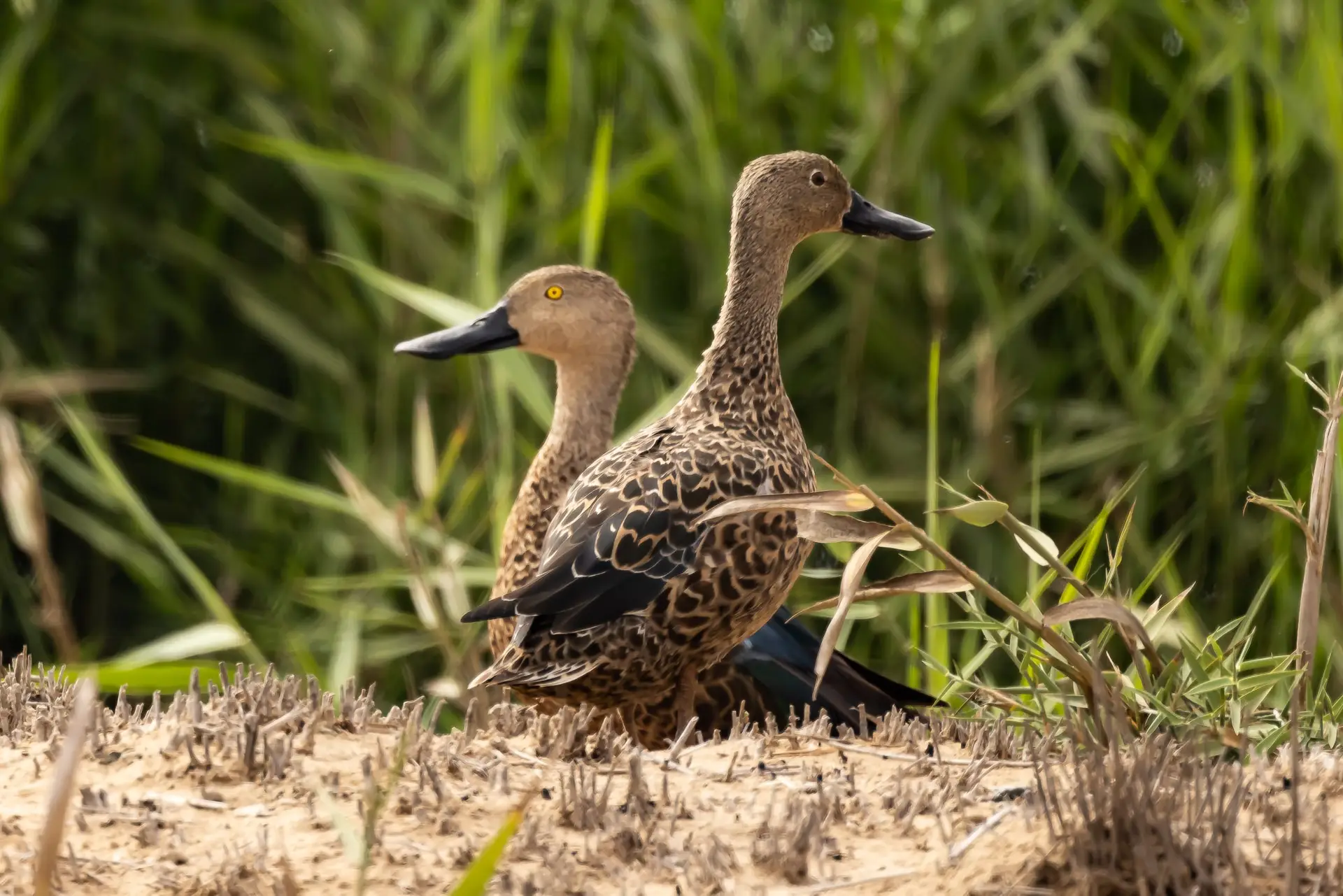
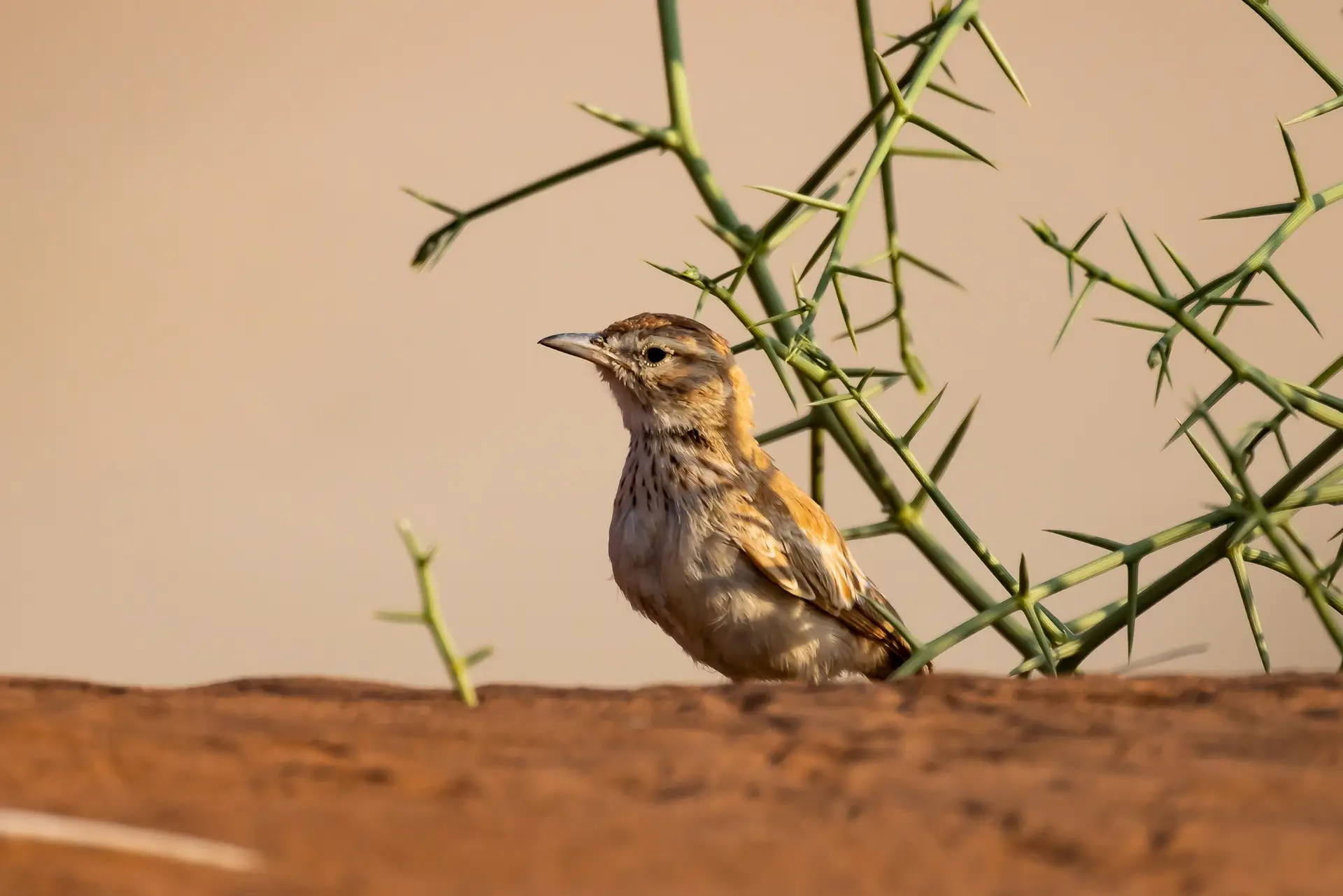

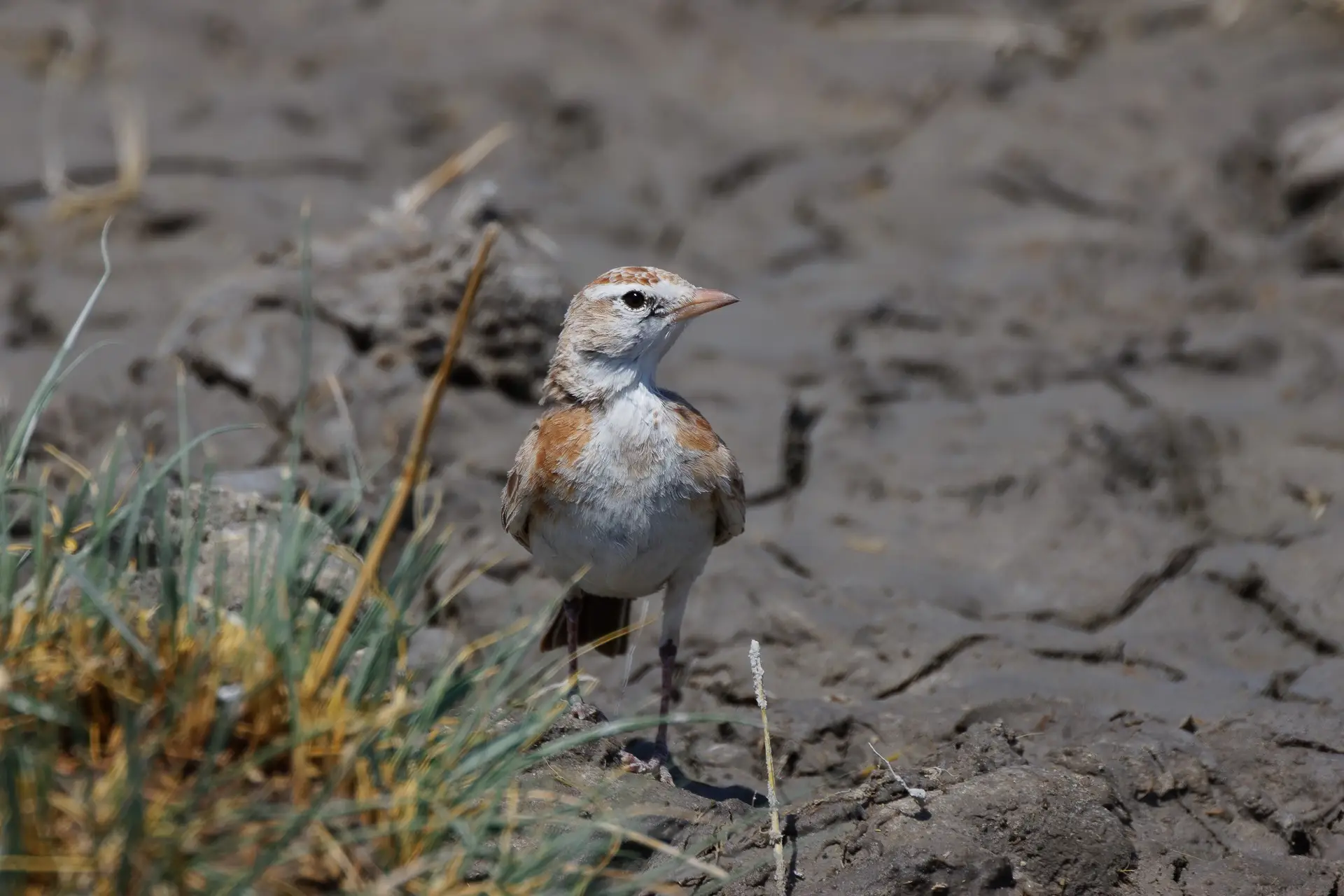
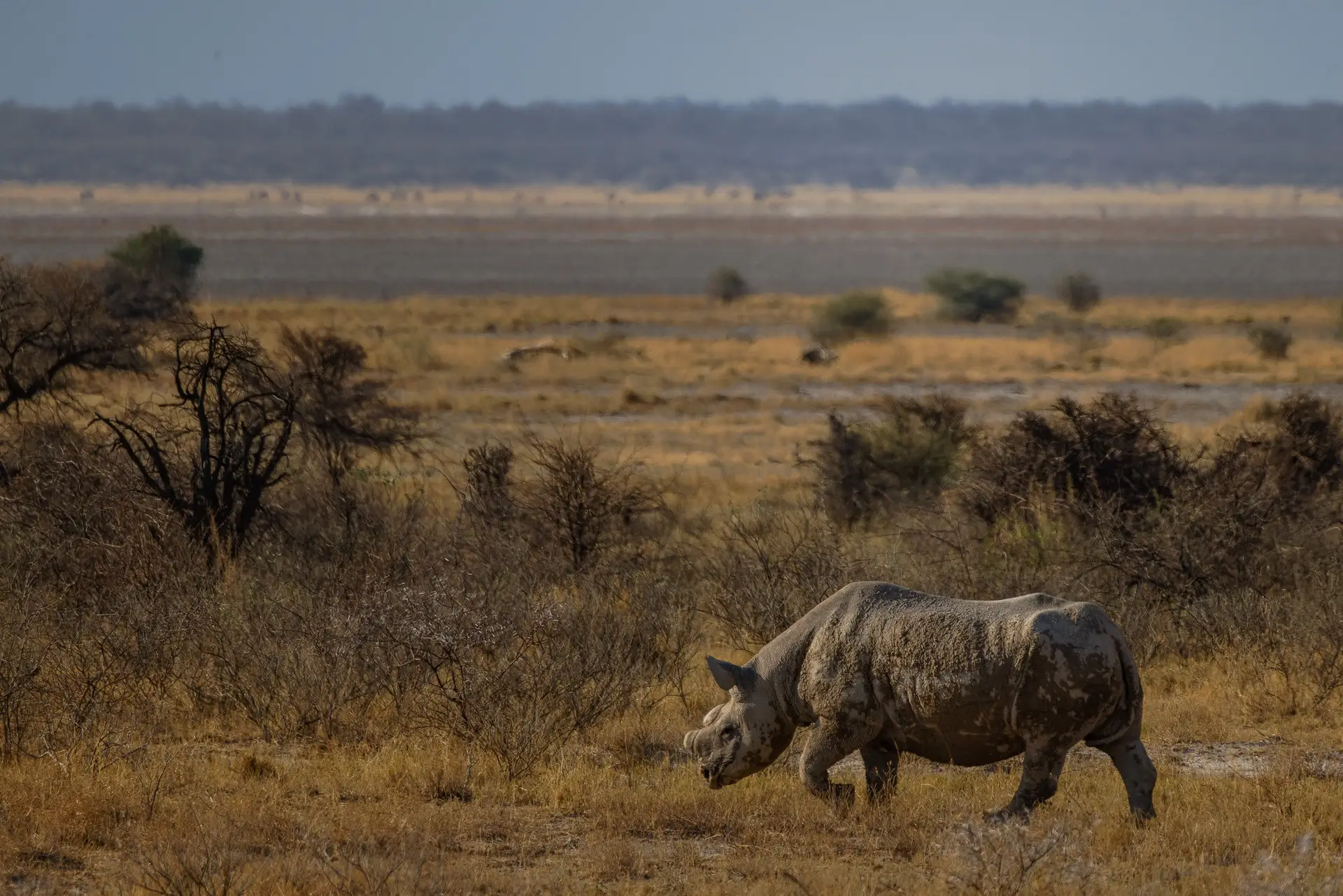
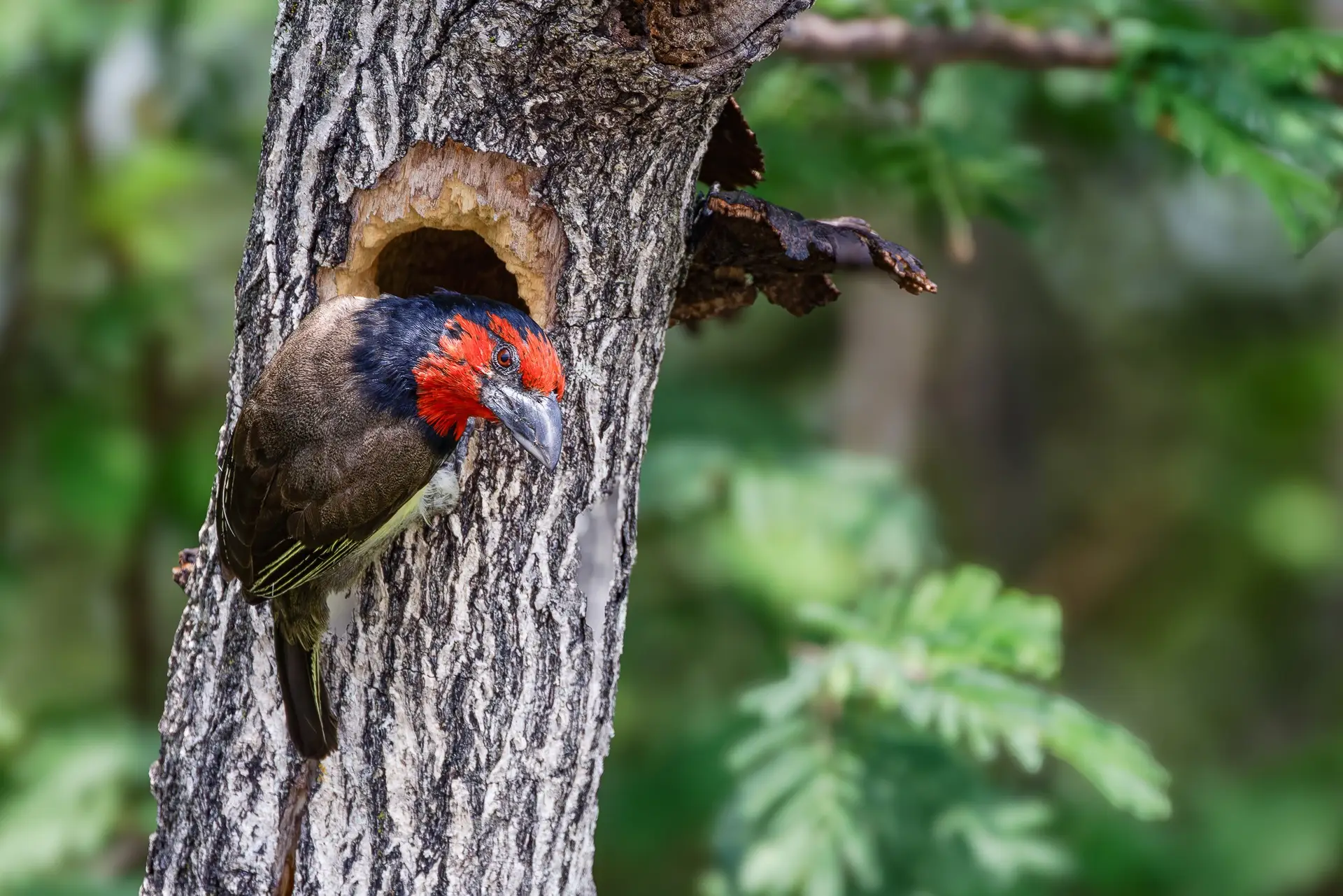
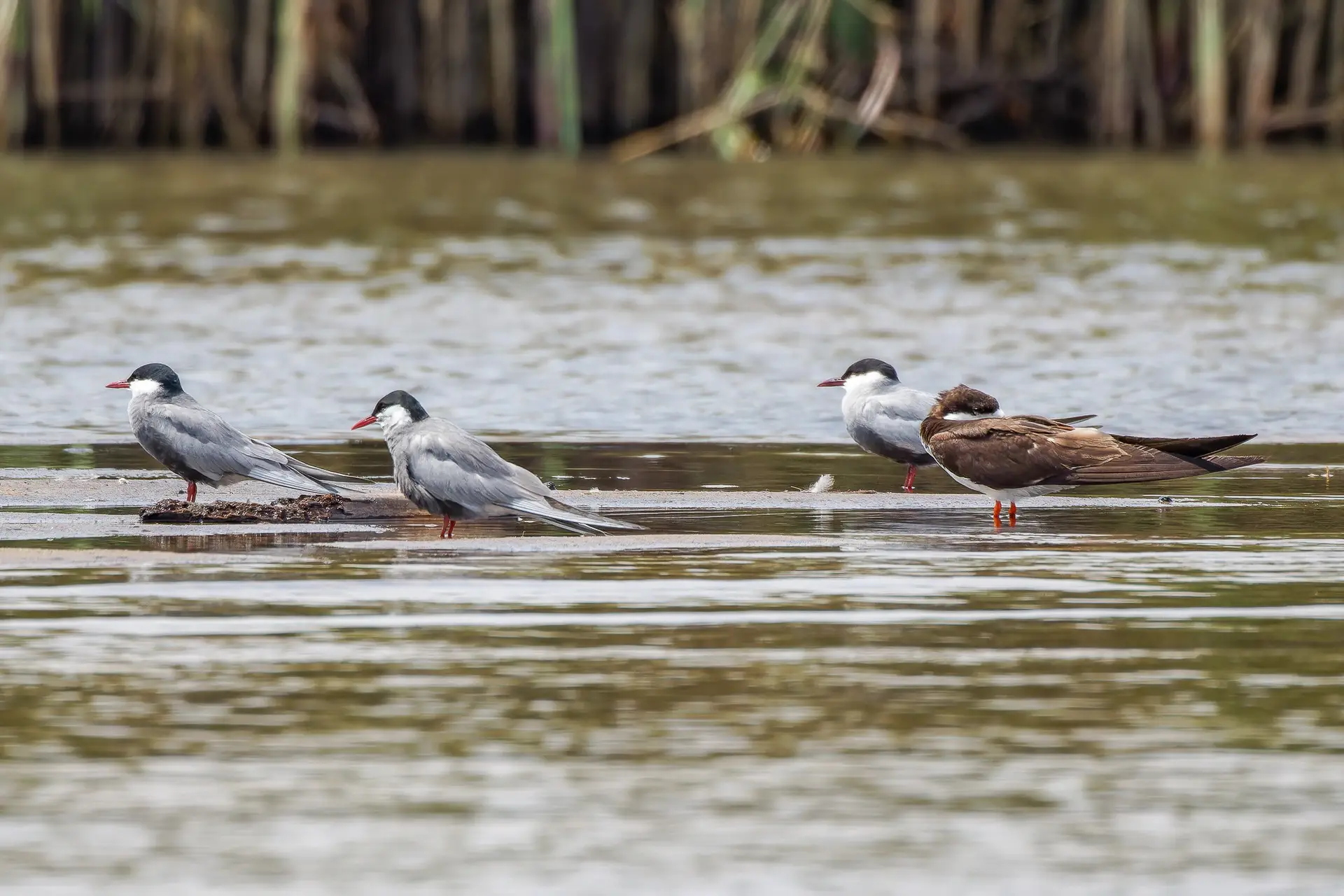
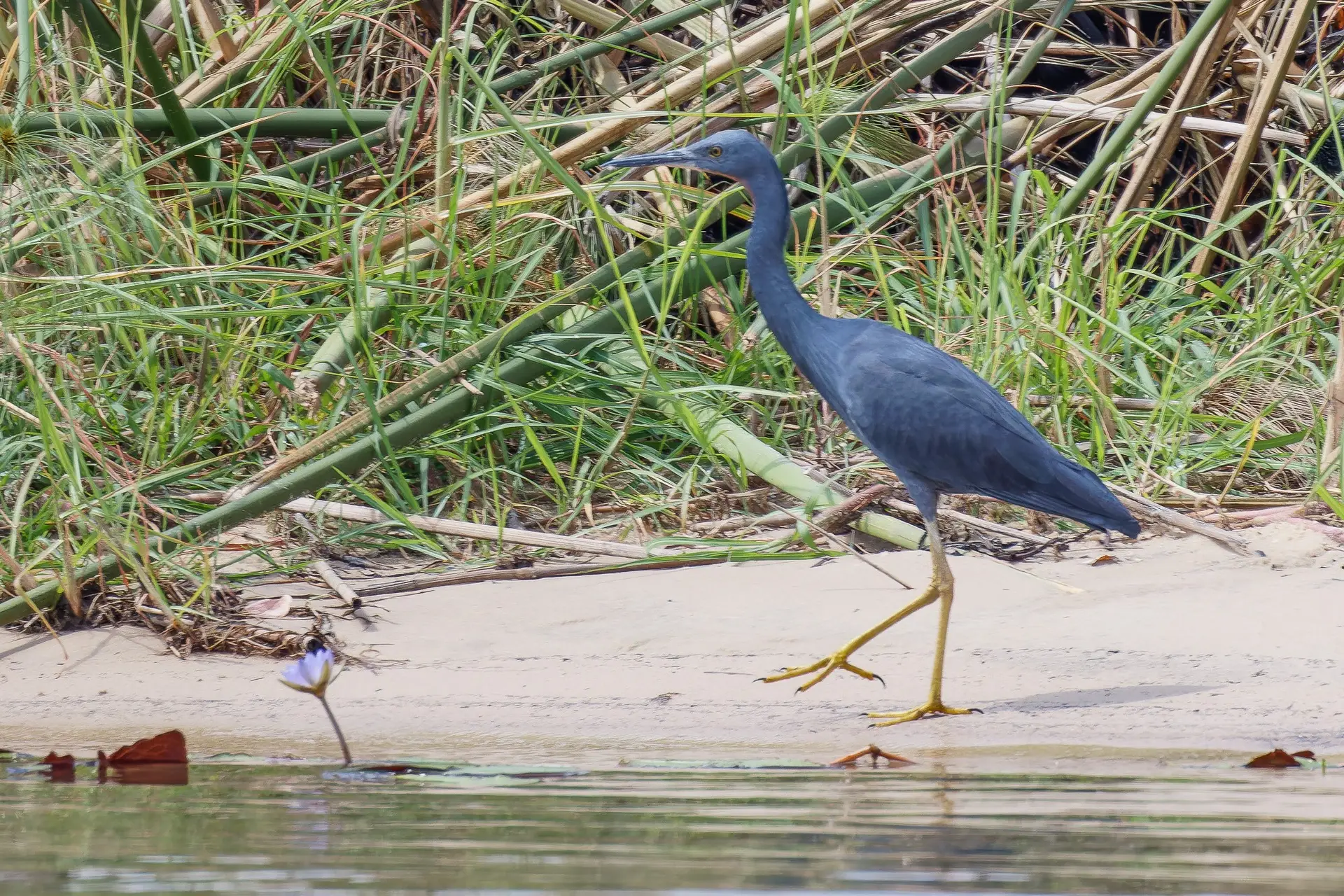

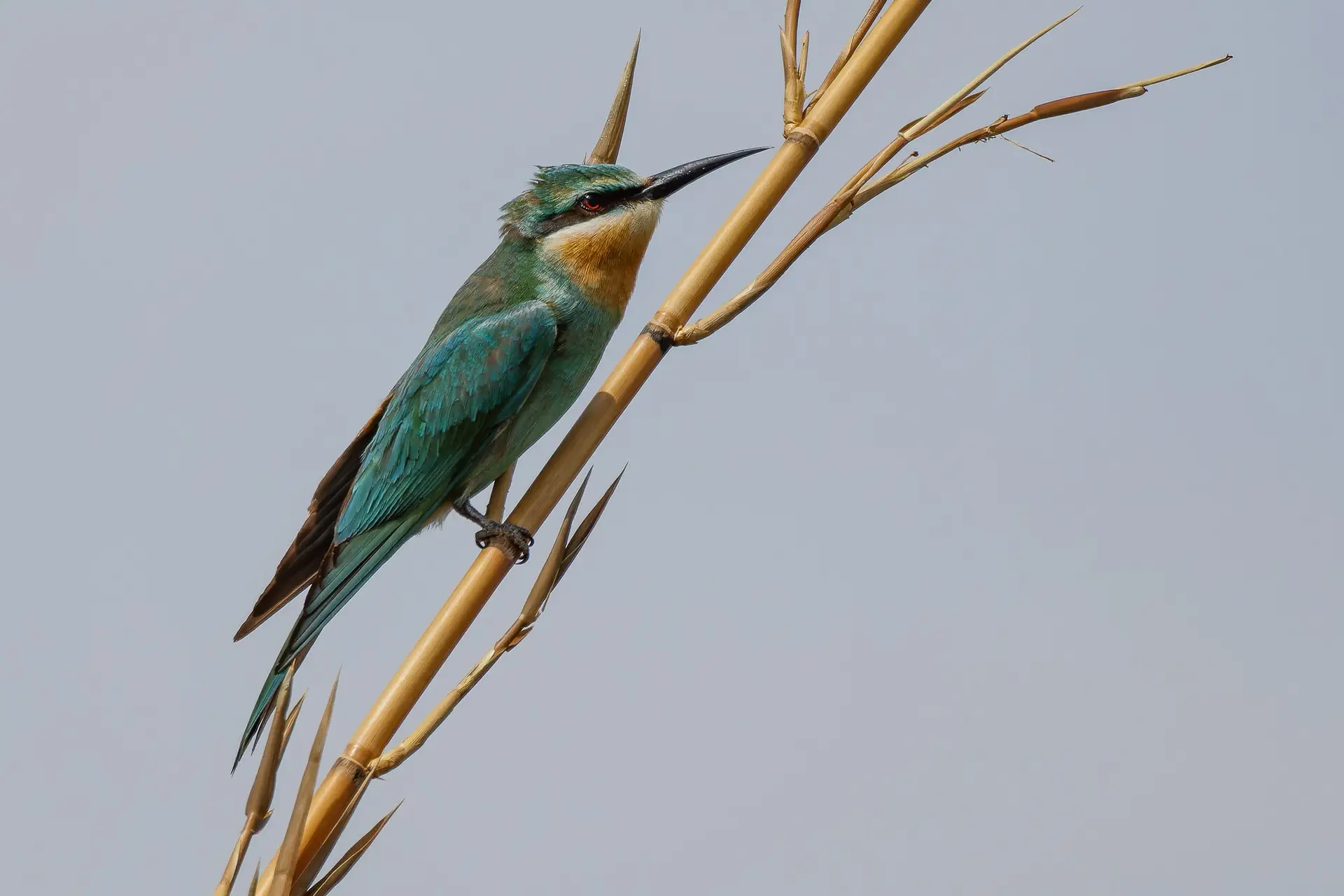

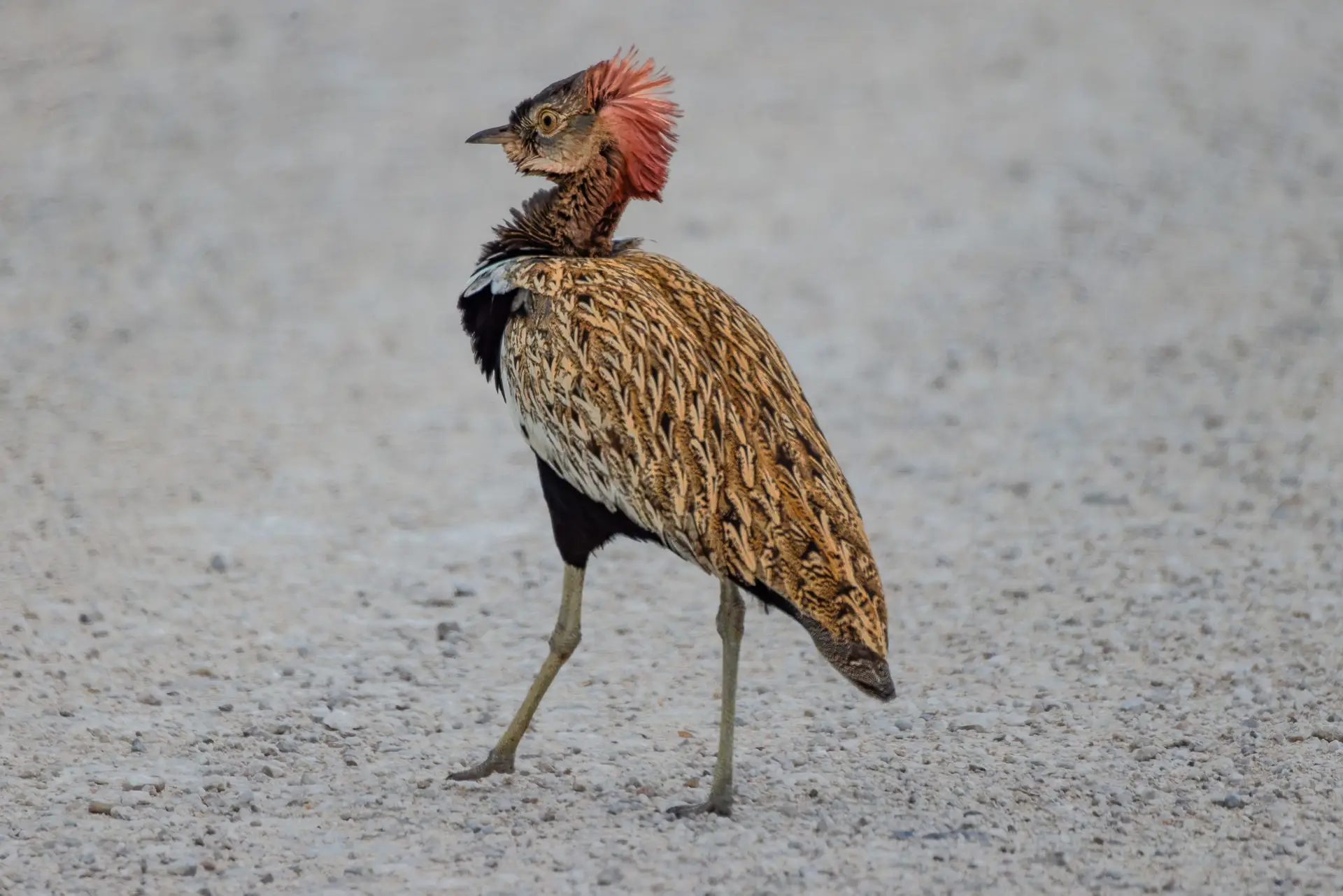
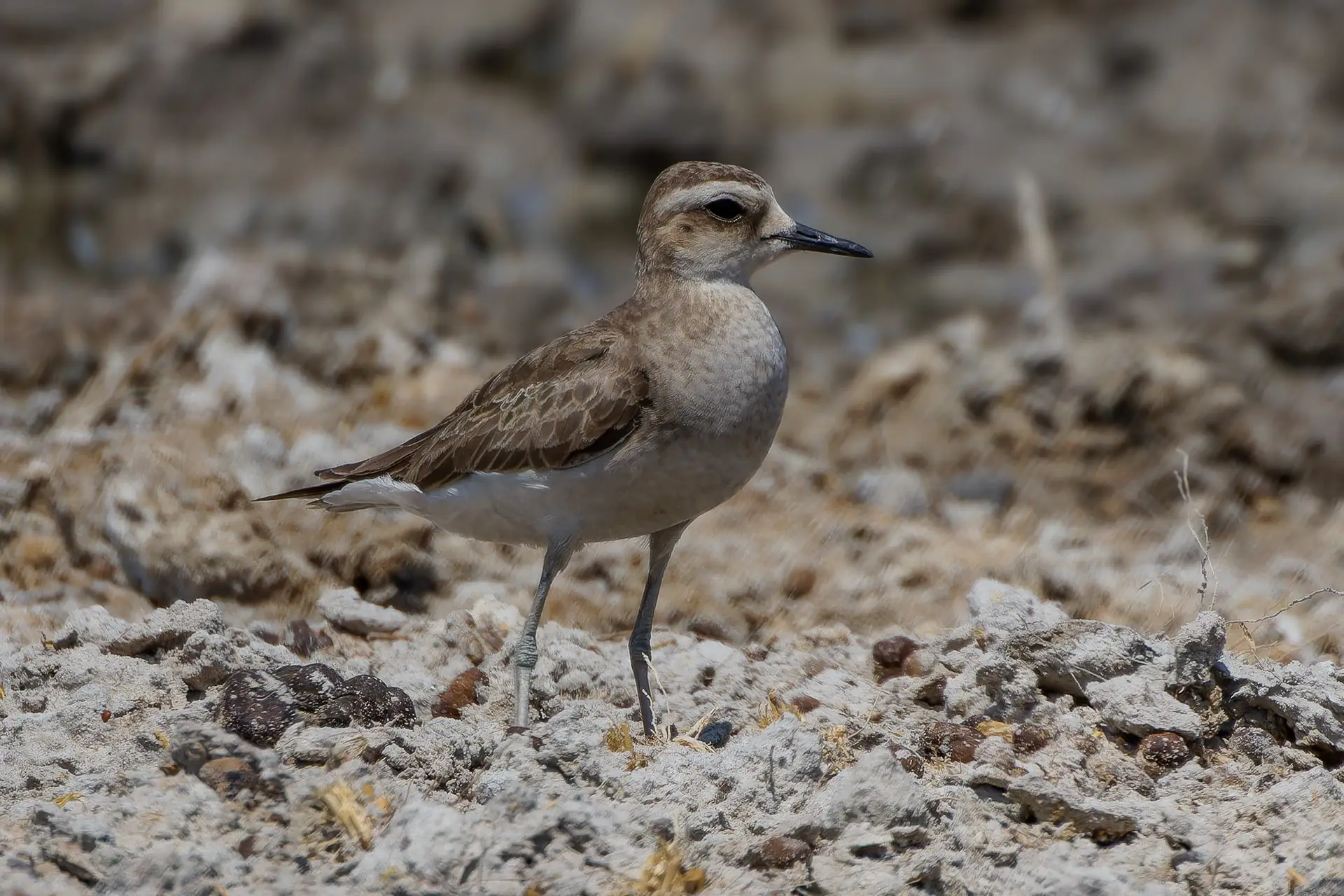
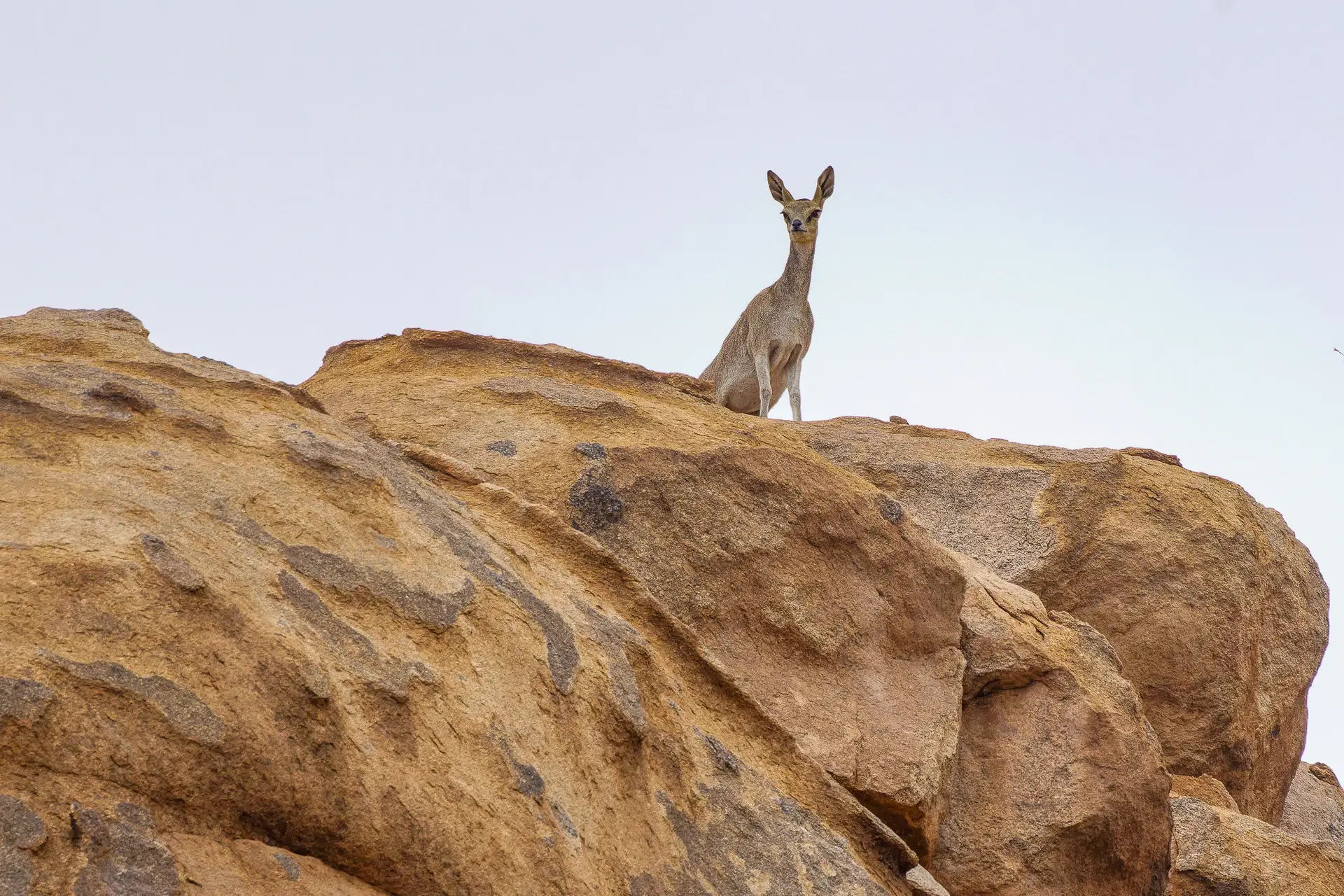
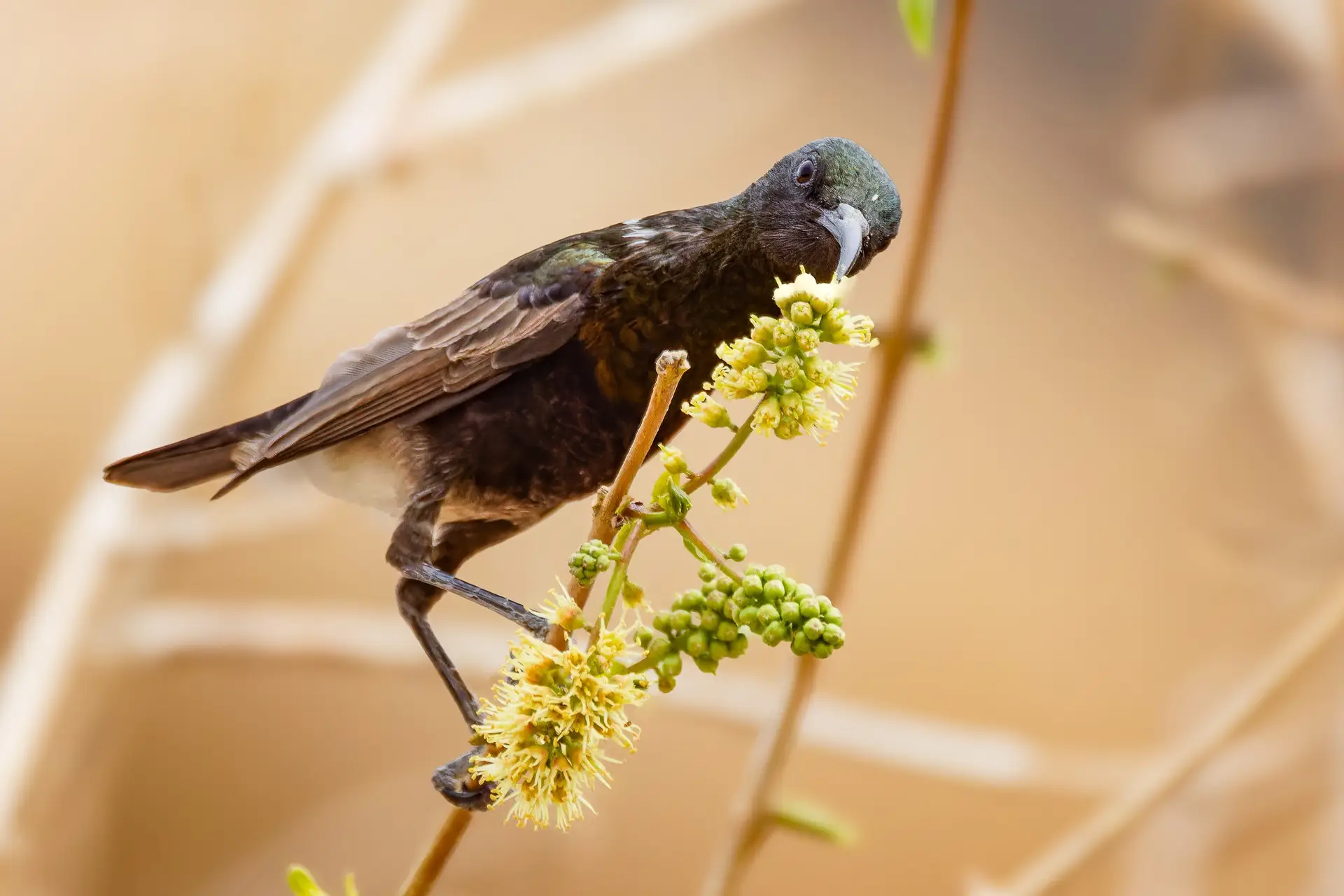
This safari traverses diverse habitats, showcasing a rich variety of birds, small animals, well-known African mammals, and impressive flora. It is a journey both ornithological and photographic in nature, as the dedicated search for birds, patient observation in areas of animal concentration, and a shared love for nature create excellent photographic opportunities.
The expedition takes you through Namibia’s various biomes:
This journey through Namibia’s varied ecosystems ensures not only the sighting of a wide range of species but also the experience of extraordinary photographic moments along the way.
All accommodations on this trip provide the essential comfort of upper-middle-class standards, featuring “en suite” bathrooms. Furthermore, their strategic locations are chosen to enhance your wildlife viewing experience and optimize route planning for the extensive driving distances in Namibia.
All accommodations on this trip provide the essential comfort of upper-middle-class standards, featuring “en suite” bathrooms. Furthermore, their strategic locations are chosen to enhance your wildlife viewing experience and optimise route planning for the extensive driving distances in Namibia.
We depart from the airport, guiding you straight into the heart of nature. If we set off early, exploring a nearby dam and its adjacent wetland would be a valuable opportunity to acquaint yourself with the captivating world of Namibian water birds.
The lodge’s tranquil surroundings provide an excellent setting to ‘arrive’ and unwind after the lengthy flight.
During a leisurely birding walk, we encounter baboons, rock hyraxes, greater kudu, wildebeests, and some giraffes.
The tree-lined landscape at the lodge offers initial encounters with the lively White-browed Sparrow-weavers and the colourful Rosy-faced Lovebirds. Palm swifts gracefully descend from the palms, and amid other swallows and swifts, you might catch sight of Bradfield’s swift.
Exploring the nearby rocks, we hope to catch a glimpse of the Orange River Francolin and the majestic Verreaux’s Eagle. The first endemics, Rockrunners, and Monteiro’s Hornbill, are sure to make an appearance, and we meticulously scan the tall trees for African scops owls.
This inaugural birdwatching adventure sets the stage for an exciting and fulfilling journey through Namibia’s diverse birdlife and natural landscapes.
In the acacia savannah of the Namibian plateau, our exploration reveals not only some African mammals but also the semi-endemic Monteiro’s Hornbill, various Cisticola species, and the familiar Crimson-breasted Shrike, well-known throughout Africa. Our birdwatching checklist grows with additions like Bradfield’s Swift, Ashy Tit, Black-faced, Violet-eared, and Common Waxbill, Stark’s Lark, Short-toed Rock Thrush, Barred Wren-Warbler, and possibly the Orange River Francolin.
As we journey over the western Escarpment, breathtaking vistas unfold before us. Along the way, we pause to investigate the impressive Sociable Weaver nests, as Pygmy Falcons often play the role of nest-busters here. With a bit of luck, we may spot Cinnamon-breasted Warblers amid the granite formations of the Western Escarpment.
The Dune Lark, Namibia’s sole true endemic bird species, awaits as a wonderful focal point for observation. It’s not just the captivating rust-red, brown, and orange hues of this bird that fascinate, but also the awe-inspiring landscape it calls home—a true delight for nature enthusiasts.
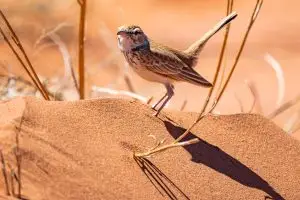
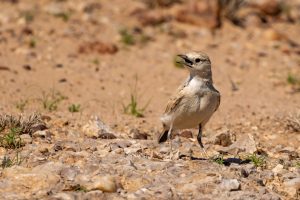
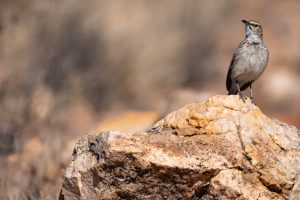
The Namibian coast presents a rich array of diverse habitats for birdwatchers, provided you know how to navigate them effectively. We traverse the seemingly lifeless gravel plains of the Namib in search of the long-tailed Eremomela, Rufous-eared Warbler, and Gray’s Lark.
Who would have imagined encountering a plant almost as ancient as the Ginko biloba, first discovered by an Austrian named Welwitsch in 1859? Amid the dunes of Kuiseb, we set out to find the somewhat lighter-hued version of the endemic Dune Lark and Gray’s Lark, alongside the Trac Trac Chat. The Walvis Bay Lagoon offers a diverse array of wading birds, which can be enjoyed to the fullest during the summer months, from October to March. We are well-acquainted with the west side and secret paths that promise excellent sightings of the Damara Tern, various other terns, and of course, numerous sandpipers, ducks, and literally thousands of Flamingos.
In Swakopmund, you can savour a good coffee under the palm trees, photograph the Orange River White-eye, and explore well-stocked bookshops for ornithological literature.
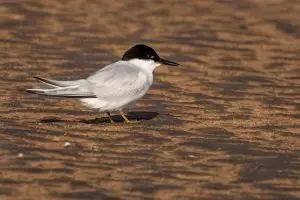
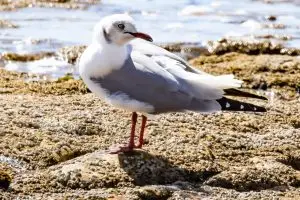
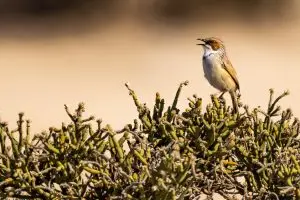
While spotting the Herero Chat may be more challenging, the region it inhabits offers a breathtaking birding, geological, and photographic experience. The Spitzkopje, also known as Bushman’s Paradise, presents numerous opportunities for birdwatching. Klipspringers gracefully scale the rock faces, and the granite terrain is adorned with thick-stemmed “Elephant’s Foot” trees. Among our target bird species, in addition to the commonly seen Short-toed Rock-Thrush and Mountain Wheatear, are the schlegelii subspecies of the Karoo Chat, Layard’s Warbler, and the Black-backed Puffback with its striking red eye.
On well-established trails tucked away in the remote corners of a private farm in the Erongo region, we’ve uncovered small bird paradises where we’d love to join you in seeking out some of the more elusive bird species.
Even before dusk settles in, we tune our ears to the calls of the hardy Hartlaub Francolin, capturing photographs of Rockrunners alongside Cape- and Cinnamon-breasted Buntings, the vocal Mountain Wheatear, and the Bokmakierie.
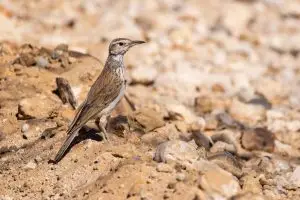
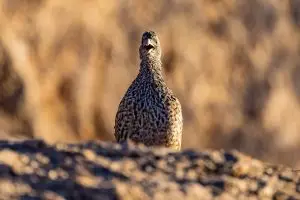
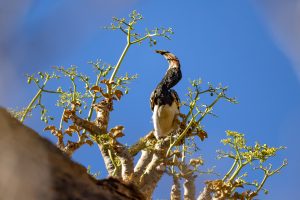
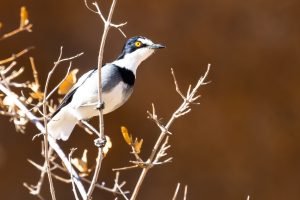
Our Land Cruisers, specially converted for game viewing, have wide window seats and the lever roof is opened at the water points. So you can comfortably take photos sitting and standing up.
Etosha National Park, often referred to as the “Great White Place,” spans over 22,000 square kilometres and ranks among Africa’s most wildlife-rich parks. While the thrill of spotting a lion by the roadside or encountering a herd of elephants is undeniable, it’s essential to recognize that Etosha’s landscape is harsh, and its wildlife faces challenging conditions.
In this unique environment, keep an eye out for the Etosha Agama and the elegant Blue Crane, as well as the remarkable Termite mounds that serve as territorial markers for Rufous-naped Larks. Amidst dense vegetation, you may also spot the diminutive Damara Dik Dik Antelopes.
Etosha’s diverse habitats, including grasslands, dry forests, floodplains, and dense acacia scrub, contribute to its extensive biodiversity. This diversity ensures that you’ll encounter not only a wide array of species but also a multitude of different birds and animals within this national park.
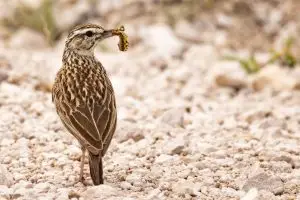

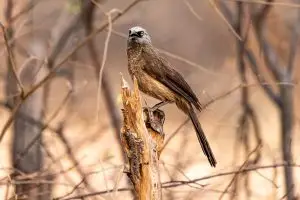

1 overnight stay at a bird-rich lodge situated along the upper Okavango River. This stop serves as a strategic point for dividing the journey, providing an opportunity to explore the abundant birdlife in the surrounding area.
1 overnight stay on a nice lodge near Mahango National Park in Namibia.
2 nights at a beautiful lodge directly in the birder’s paradise Shakawe, where the Okavango panhandle shows many sought-after species. (located in Botswana)
Our visit takes us to Mahango National Park, and despite its relatively modest size, this park boasts a wealth of wildlife. Here, you can expect to encounter the rare sable and roan antelopes, along with giraffes, elephants, lechwe, waterbuck, and reedbuck, all congregating along the banks of the Okavango River.
In the lodge’s garden, keep an eye out for the Amethyst sunbird, Brown-, Jameson’s-, and Red-billed Firefinches, White-browed Robin-Chat, and Meyer’s Parrots.
We’ll embark on flatboat excursions to explore further, seeking out the African Skimmer, Open-billed Stork, Rufous-bellied Heron, Green-backed Heron, Black-crowned Night Heron, and numerous other new bird species. With a stroke of luck, we might even spot sought-after species like the Slaty Egret and White-backed Night-Heron. And don’t forget the majestic Pel’s Fishing Owl, which has been sighted in this area!
Our sightings have also included the exquisite Narina Trogon, making our journey through Mahango National Park a truly remarkable and rewarding experience.
The Zambezi River, with its numerous divisions into long linear islands and tributaries, has seen its wildlife somewhat diminished due to the dense Lozi population in the area. However, on a boat trip, you’ll have fantastic photo opportunities to capture various turacos and water birds. These include the rare African Finfoot, Half-collared Kingfisher, Slaty Egret, Yellow-throated Leaflove, Eastern Nicator, Lesser Jacana, and a variety of bee-eaters.
Of particular note is the Southern Carmine Bee-eater, which breeds along the Zambezi’s banks from August onwards. Witnessing this ornithological marvel is a must-see experience.
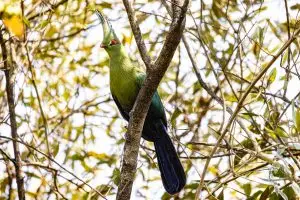
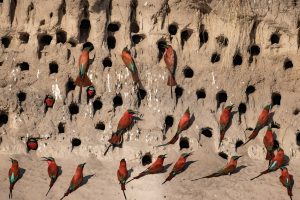
Our journey leads us to the Chobe River, a remarkable meeting point of Namibia, Zambia, Botswana, and Zimbabwe, offering one of Africa’s densest wildlife populations. Each year, the Chobe River floods numerous shallow islands, creating a thriving ecosystem with an abundance of food.
As we explore this region, we’ll encounter numerous elephants lining the riverbanks, and if we’re lucky, we might even witness them swimming—a fantastic opportunity for photographers. The flat islands are grazed by buffalo, impala, the rare grass antelope known as the “Puku,” and Waterbuck. Lying Nile crocodiles can be seen on the shores, occasionally coming quite close.
During our boat cruise, flocks of Open-billed Storks, Whistling Ducks, Spur-winged Geese, and Pratincoles will pass overhead. Slaty Egrets will grace us with their presence along the shore, and the remarkable Black Heron will impress with its unique fishing technique of forming its wings into a bell shape. Kingfisher enthusiasts can rest assured that there will be ample opportunities for photography.
In 1855, David Livingstone described this area in awe: “The whole scene was extremely beautiful; the banks and islands dotted over the river are adorned with sylvan vegetation of great variety of colour and form…no one can imagine the beauty of the view from anything witnessed in England. It had never been seen before by European eyes; but scenes so lovely must have been gazed upon by angels in their flight.”
Here, an imposing bank at Victoria Falls is adorned with a dense forest of Cape figs, ferns, water pears, and majestic baobabs. Trumpeter Hornbills indulge in the lush figs and berries, while the vibrant Schalow’s Turaco, with its striking red wings, calls out in a thrilling manner.
Hidden away in the undergrowth, the Thrush Nightingale swims in secrecy, and the Bronze Mannikin flits among the ferns.
With over 470 bird species recorded in this area, it stands as a hotspot for nature enthusiasts.
Additionally, Zimbabwe is home to many talented artists, and you’re likely to come across some remarkable artworks or engage with fascinating individuals during your visit.
sadly the time for departure has arrived…
Victoria Falls Airport provides connectivity to a wide array of airports. For international travelers, we recommend exploring connecting flights through Johannesburg, Cape Town, or Windhoek to ensure a seamless and convenient journey.
This trip is organised in cooperation with Birdingtours GMBH.
You may book this trip there and have the flights booked there as well.
You can also book the flights directly and book the trip with us. (This is recommended if you need extra days or services).
| Participants | per Person |
|---|---|
| 2 Person | $11'567.60 |
| 3 Persons | $9'209.20 |
| 4 Persons | $8'031.10 |
| 5 Persons | $7'584.50 |
| 6 - 7 Persons | $7'254.50 |
| singe supplement | $1'210.00 |
Primarily, our tours are not geared solely towards twitching, allowing ample time for observation, photography, and enjoying the rich birdlife. Nevertheless, it’s important to note that this is a birder tour, where our focus remains on actively calling, locating, and observing birds. Naturally, other aspects of nature are also integral to the trip, and we are equally enthusiastic about providing information on plants, reptiles, or mammals.
Yes, indeed. The trip offers a healthy mix of diverse habitats. You will encounter numerous endemic species, as well as others not exclusive to Namibia. If your focus is specifically on endemic species, exploring an individual trip might be worth considering.
You undoubtedly have ample time for photography. We are flexible, patient, and more than willing to capture unique moments ourselves. However, if you have very specific photo preferences, an individual trip might be the optimal solution.
Not at all, as our guides are fluent in multiple languages, and most Germans are proficient in English, fostering a seamless connection through our shared passion for birdwatching.
This Safari was last updated on 25. July 2024 @ 14:13.
Avifauna Namibia: The Ultimate Birding Tour with natural history specialities to the central and north-western birding hotspots of Namibia.
Larks & Deserts, birding the southern Namibian Biomes & Deserts; Individual Ornithology & Nature Photography Tour in Southern Namibia
Warblers & Pachyderms, a Birding Safari with Natural History; Individual guided birding and nature photography tour from northern Namibia to Victoria Falls in the north-east.